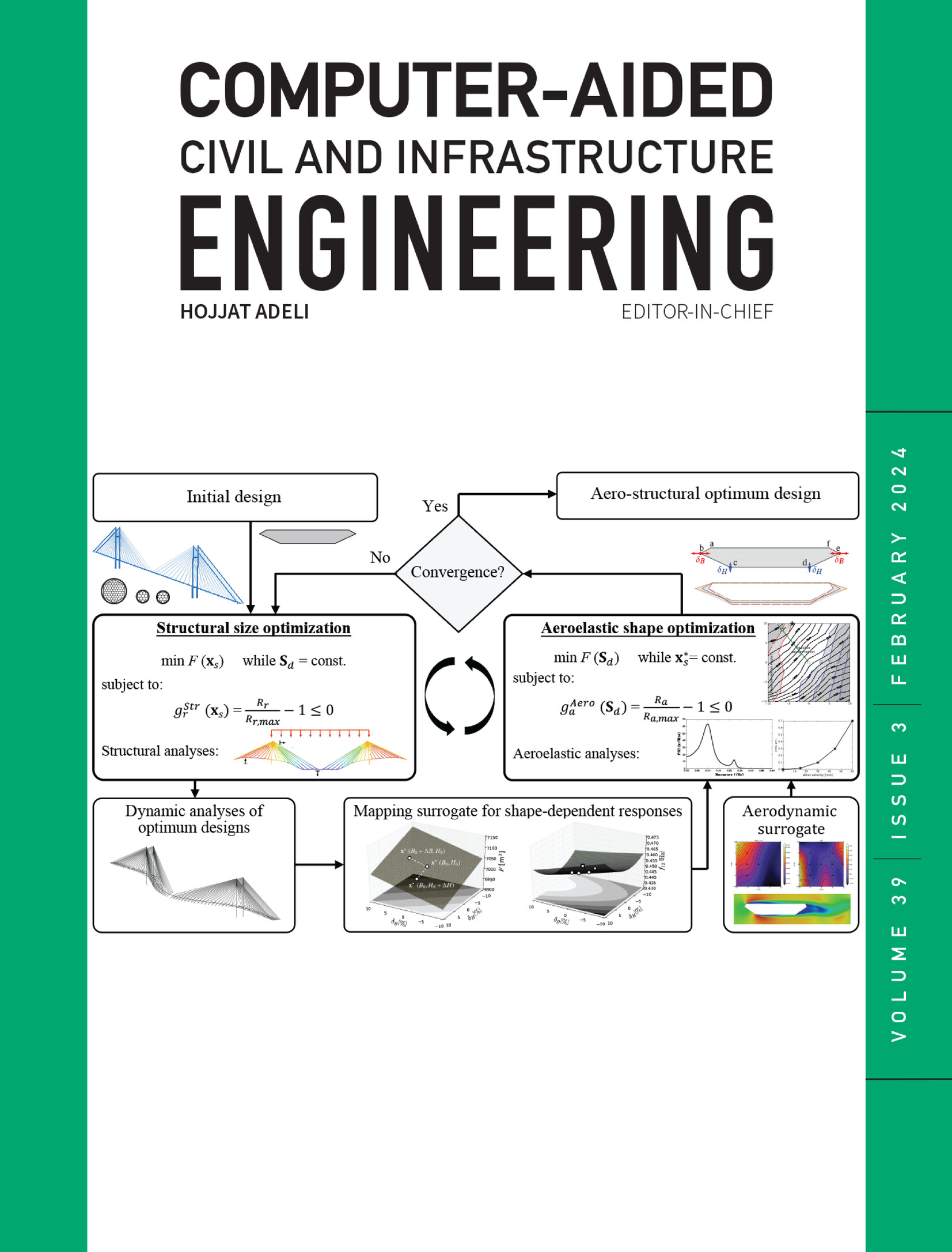Hidden structural information reconstruction and seismic response analysis of high-rise residential shear wall buildings with limited structural data
IF 8.5
1区 工程技术
Q1 COMPUTER SCIENCE, INTERDISCIPLINARY APPLICATIONS
引用次数: 0
Abstract
The high-rise residential shear wall structure is a crucial component of urban building clusters, while the limited availability of detailed structural information becomes a critical bottleneck in improving the accuracy of seismic performance assessment for high-rise residential shear wall buildings in urban areas. Based on easily obtainable yet limited structural data at the urban scale, this paper proposes a method to address the shortcomings of existing research on reconstructing hidden structural information and enhance the accuracy of structural seismic performance assessment. It includes a physics-constrained generative adversarial network module and a fuzzy inference system module to reconstruct the spatial arrangement of shear walls, and material strength grades within buildings, respectively. Validated against two actual buildings, the method outperforms the widely used simplified analysis method at the urban scale, achieving 85.9% accuracy in predicting damage states across various floors.利用有限的结构数据对高层住宅剪力墙建筑进行隐藏结构信息重建和地震响应分析
高层住宅剪力墙结构是城市建筑群的重要组成部分,而详细结构信息的有限性成为提高城市高层住宅剪力墙建筑抗震性能评估准确性的关键瓶颈。基于城市尺度下易于获取但有限的结构数据,本文提出了一种方法来解决现有研究在重建隐藏结构信息方面的不足,并提高结构抗震性能评估的准确性。它包括一个物理约束生成式对抗网络模块和一个模糊推理系统模块,分别用于重建剪力墙的空间布局和建筑物内部的材料强度等级。通过对两座实际建筑的验证,该方法在城市规模上优于广泛使用的简化分析方法,在预测各楼层的破坏状态方面达到了 85.9% 的准确率。
本文章由计算机程序翻译,如有差异,请以英文原文为准。
求助全文
约1分钟内获得全文
求助全文
来源期刊
CiteScore
17.60
自引率
19.80%
发文量
146
审稿时长
1 months
期刊介绍:
Computer-Aided Civil and Infrastructure Engineering stands as a scholarly, peer-reviewed archival journal, serving as a vital link between advancements in computer technology and civil and infrastructure engineering. The journal serves as a distinctive platform for the publication of original articles, spotlighting novel computational techniques and inventive applications of computers. Specifically, it concentrates on recent progress in computer and information technologies, fostering the development and application of emerging computing paradigms.
Encompassing a broad scope, the journal addresses bridge, construction, environmental, highway, geotechnical, structural, transportation, and water resources engineering. It extends its reach to the management of infrastructure systems, covering domains such as highways, bridges, pavements, airports, and utilities. The journal delves into areas like artificial intelligence, cognitive modeling, concurrent engineering, database management, distributed computing, evolutionary computing, fuzzy logic, genetic algorithms, geometric modeling, internet-based technologies, knowledge discovery and engineering, machine learning, mobile computing, multimedia technologies, networking, neural network computing, optimization and search, parallel processing, robotics, smart structures, software engineering, virtual reality, and visualization techniques.

 求助内容:
求助内容: 应助结果提醒方式:
应助结果提醒方式:


